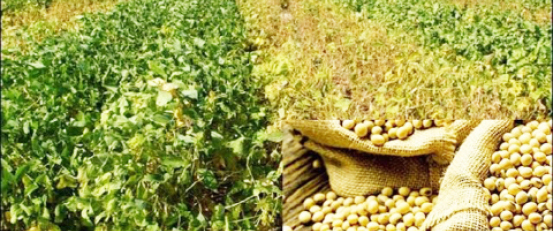There are very few constants in farming, especially when it comes to planting. Soil temperature, moisture and disease are just a few variables that influence planting timing. Proper planning prepares you to take advantage of best-case timing and overcome worst-case scenarios.
Assess the Soil
Soil conditions are an important guide to planting preparations. Soil testing is a great and inexpensive first step as the results can eliminate surprises, like pH fluctuations, and indicate important nutrient levels, like phosphorus and potassium. These results help make economical fertiliser choices. Maximise the accuracy of the test results by choosing a reputable soil analysis laboratory and utilising resources to interpreting soil test results.
While sampling, take note of soil moisture in your fields. It’s tempting to start planting or tilling early despite soil moisture, but working soil that is too wet can lead to compaction and season-long consequences including:
Reduced plant stands caused by hindered root penetration and growth.
- As rainy season begins, farmers should not ignore weather prediction
- How farmers can make profit from snail value chain – Experts
Increased runoff caused by decreased water infiltration.
Decreased nutrient use efficiency caused by limited nutrient movement in the soil.
Moist soils also provide a favorable environment to soilborne pathogens including Pythium and Phytophthora. These pathogens can cause seed rot, root rot, damping off and seedling blight, negatively impacting emergence, stand establishment and plant vigor. Seed treatments can help protect crops from these early-season diseases, while also enhancing root health and plant vigor for a faster, stronger, more uniform emergence.
Planting in dry conditions poses a different set of challenges. Inadequate or uneven soil moisture inhibits germination and prevents uniform stands, especially in maize. A deeper planting depth can help increase seed-to-soil contact and moisture uptake for a better stand once the soil warms up. Keep an eye on resources like the Drought Monitor for regional updates and adjust planting depth accordingly. In very dry or high-residue systems, planting deeper is less risky than hoping for rain.
Similarly, pay attention to the temperature forecast. Even if you plant in warm enough soils, temperature drops within the first two days of planting can delay germination and leave seeds more susceptible to disease. However, waiting too long to plant gives weeds an advantage.
Think About Timing
Although early planting may be advantageous for yield potential, planting too early can also be detrimental to your crops and bottom line. Regardless of your region, decide on planting timing by evaluating soil temperature and moisture — no matter what date the calendar says.
Maize Best Practices
Plant maize when soil temperature reaches a minimum of 50° F. When soil moisture is high, a planting depth of 1.5 to 2 inches is appropriate. In drier soils, plant deeper at 2.5 to 3 inches. Avoid planting depths of less than 1.5 inches to prevent root lodging.
Soybean Best Practices
Plant soybeans when the soil temperature reaches a minimum of 55°F at a depth of around 1 to 1.75 inches and no deeper than 2.5 inches. Planting soybeans too deep wastes energy and may inhibit emergence, especially under stressful or compacted conditions.
For both maize and soybeans, wait to plant until you expect the minimum temperature to be maintained for at least two days after planting, after which the risk of chilling is reduced.
Evaluate Weed Management Plans
Early-season weeds can significantly hinder crop growth, development and yield potential by stealing necessary nutrients and water. Before planting, reevaluate your existing weed management plan. Identify successes and setbacks, historical weed pressure and soil conditions, like flooding, that may have introduced new weed seeds.
A full label rate of a proven pre-emergence maize herbicide with multiple effective sites of action and strong residual control can help you start with a clean slate. Reach out to experts. Take this opportunity to ask questions and determine whether the fields have dried down enough to apply pre-emergence herbicides.
If you didn’t get to it after harvest, carve out some time to clean out your equipment. Weed seeds are notoriously hardy and any stowaways in your equipment can easily reenter the seed bed during planting. Try to accomplish this alongside your regular safety inspections before your anticipated planting window to ensure you are ready to go when the conditions are right.
Whether you choose to plant early or delay planting, waiting for optimal soil conditions often pays off in the long run. In the meantime, take stock of your soil conditions, prepare your equipment, and get in touch with trusted advisors to finalise your planting preparations.
SOURCE: Syngenta

 Join Daily Trust WhatsApp Community For Quick Access To News and Happenings Around You.
Join Daily Trust WhatsApp Community For Quick Access To News and Happenings Around You.


